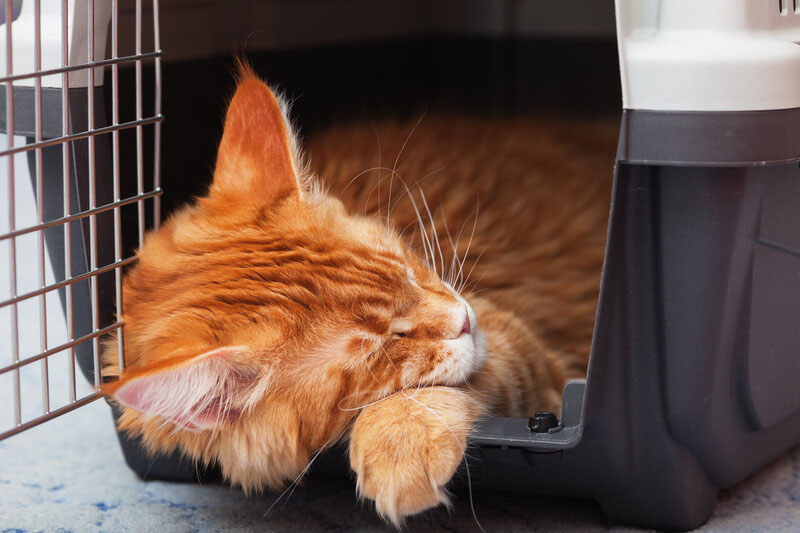Traveling with your pet can be is a daunting and stressful task — for you and your furry companion. First, you want to make sure your pet is fit to travel. There is much to know and prepare for before your pet becomes a passenger. Some animals simply cannot handle travel due to age, illness, injury, or temperament. If you’re unsure, consult with your veterinarian.
Preparing for Pet Travel
When you are preparing to travel with your pet make sure you have all the proper identification for your travel buddy. Your pet should have identification on its collar that lists your home address and cell phone number. You may also want to include the hotel information where you are staying.
Does your pet have a microchip? If you haven’t already, now may be a good time to consider microchipping your pet. According to the American Society for the Prevention of Cruelty to Animals (ASPCA), getting your pet microchipped is a safe and permanent form of identification. If your pet is already microchipped, confirm that all the contact information registered on the chip is accurate and up to date before your departure.
Refill any prescriptions your pet takes ahead of time and ensure their vaccinations are up-to-date. When traveling in the US, you’ll need to provide proof of a rabies vaccine. Take photos of your pet’s medical history documents and save them on your phone. In the event of a medical emergency, these documents could be useful for the vet when treating your furry companion.
If you plan on traveling frequently to Europe, it may be a good idea to get your pet their own EU Pet Passport.
Traveling with Your Pet by Plane or Car
Whatever your method of transportation, you’ll want to check the rules and regulations for traveling with your pet. Pet travel policies vary from one airline to the next and guidelines change often. Small animals, generally around 20 pounds or less, are permitted to travel in the cabin with an adult. Only a limited number of animals are allowed on each flight, so contact the airline as soon as possible to reserve a spot. If your travel plans are flexible, consider a midweek flight, which will likely be less crowded. Avoid flying with your pet during the holidays and take a nonstop flight whenever possible.
It is not recommended flying your pet in cargo, but sometimes it’s unavoidable. Some airlines do not fly pets in the cargo hold at all, so check with your airline to confirm that your pet will be welcomed aboard. It is also important to avoid traveling when it’s extremely hot or cold. Most airlines will not fly pets in cargo during the summer months. Even though the cargo hold is temperature-controlled, your pet will have to endure the extreme temperatures during loading and unloading on the tarmac. Invest in a crate that allows your pet plenty of room to stand up and turn around. The crate should provide adequate ventilation and a waterproof bottom.
Travelers should also request that the gate agent notify you once your pet has been loaded on the plane. When you board the plane, tell the flight crew that your pet is in cargo so they know to keep an extra close eye on the cargo pressure and temperature.
If you are going to rent a car once you get to your destination, make sure you reserve a car that allows pets. Not all rental car companies allow pets. Clarify the car rental company’s definition of pets, support animals, and service animals and secure proper documentation before you go.
 Pet-Friendly Hotels
Pet-Friendly Hotels
Do your research before you travel to make sure you’re selecting a pet-friendly hotel. There are resources such as BringFido, which offers an index of dog-friendly hotels and restaurants. Request a hotel room by an exit on the ground floor to conveniently take your dog for a walk. Bring along a small flashlight for late-night walks and a towel to wipe dirty paws. Even if your dog is potty-trained, an unfamiliar setting could leave them anxious and susceptible to having an accident. Put down a potty pad in the room, just in case.
You may want to bring extra blankets and pillows to make your home away from home feel more familiar when traveling with your pet.
Some Pets Make Great Travel Buddies
Some animals don’t mind traveling and make great travel buddies. Each pet is unique and adapts to travel differently. Whether it’s your pet’s first vacation or they’re a seasoned traveler, these tips will help guarantee you and your furry friend have a seamless journey.

